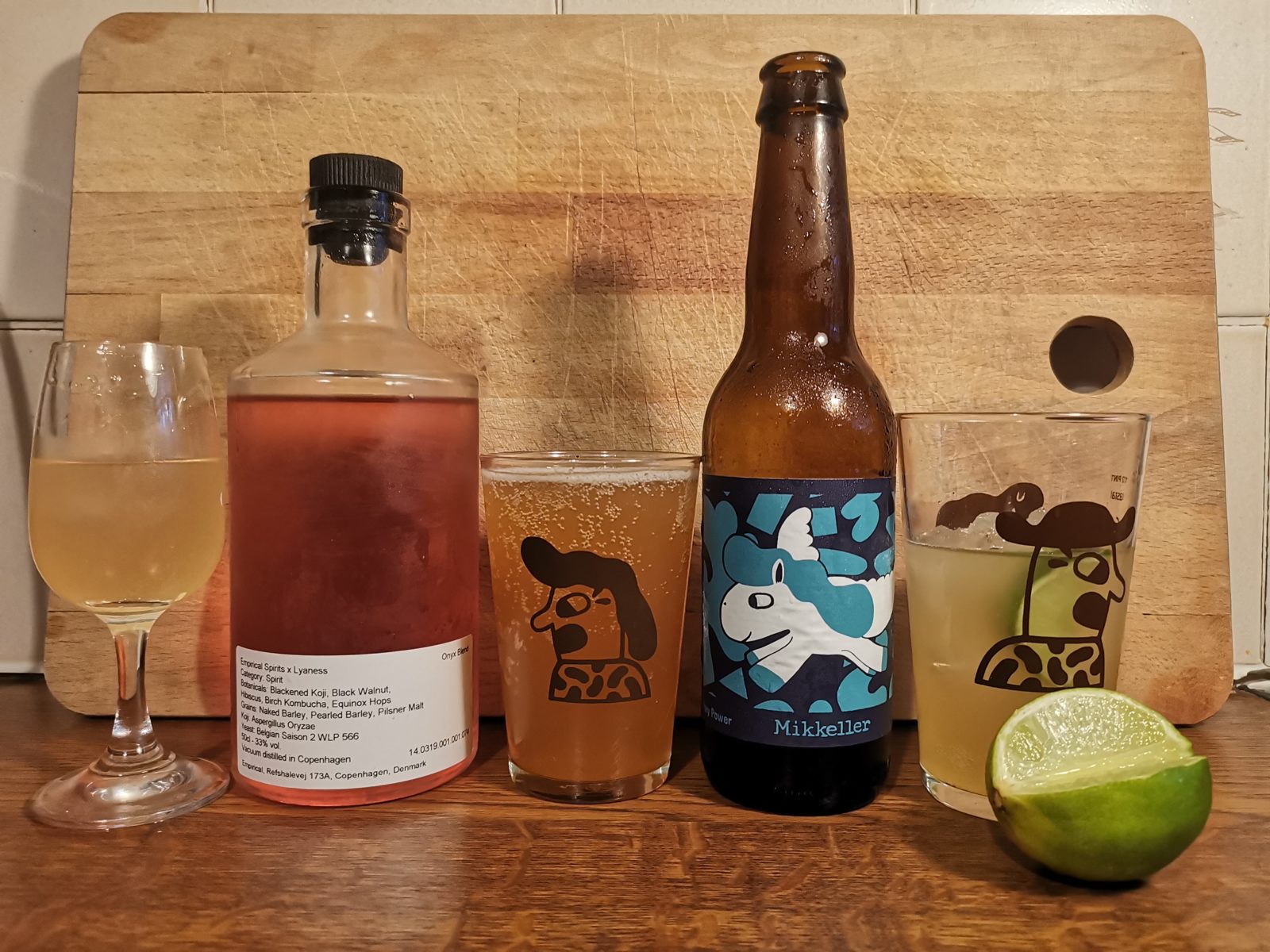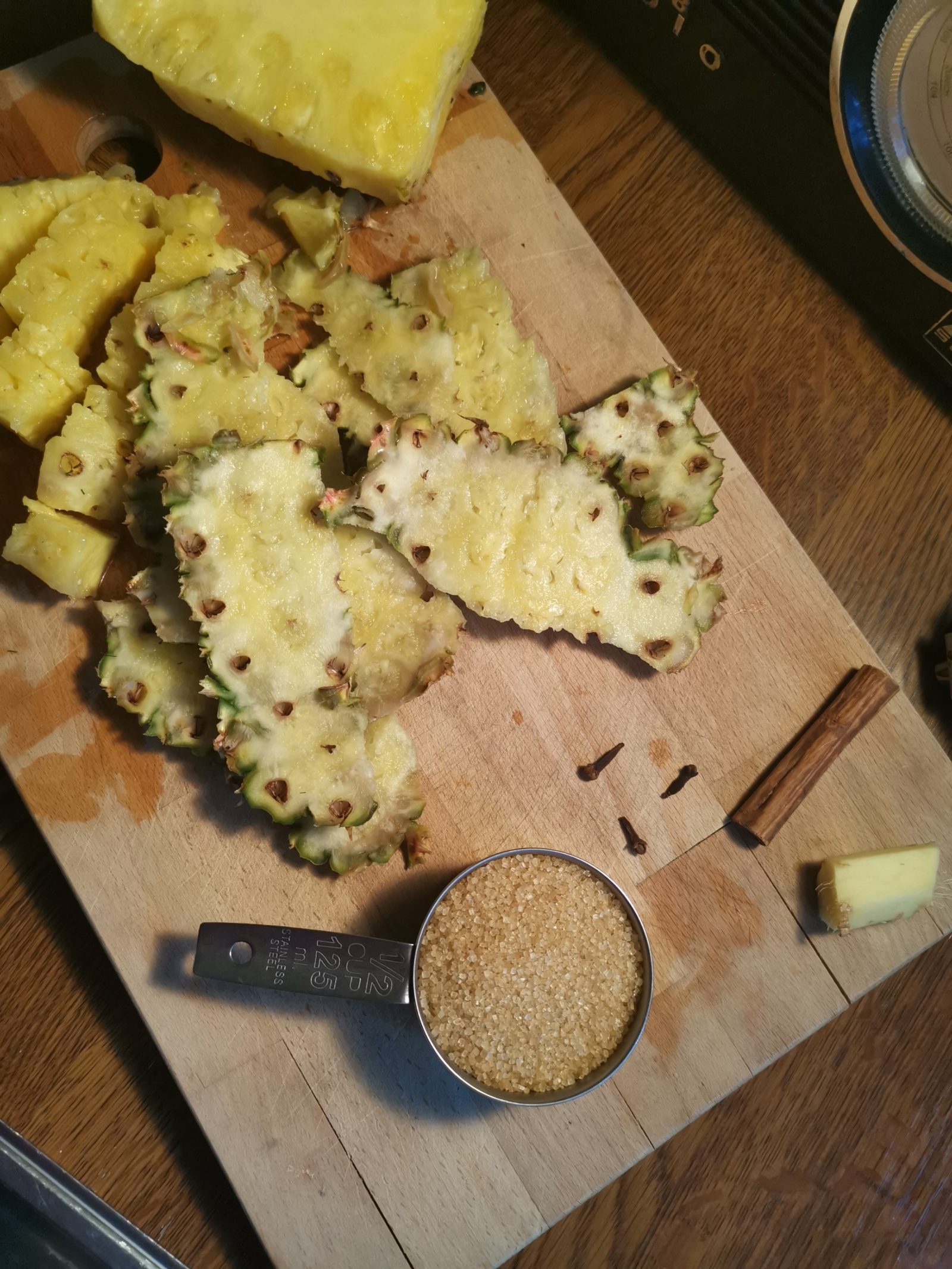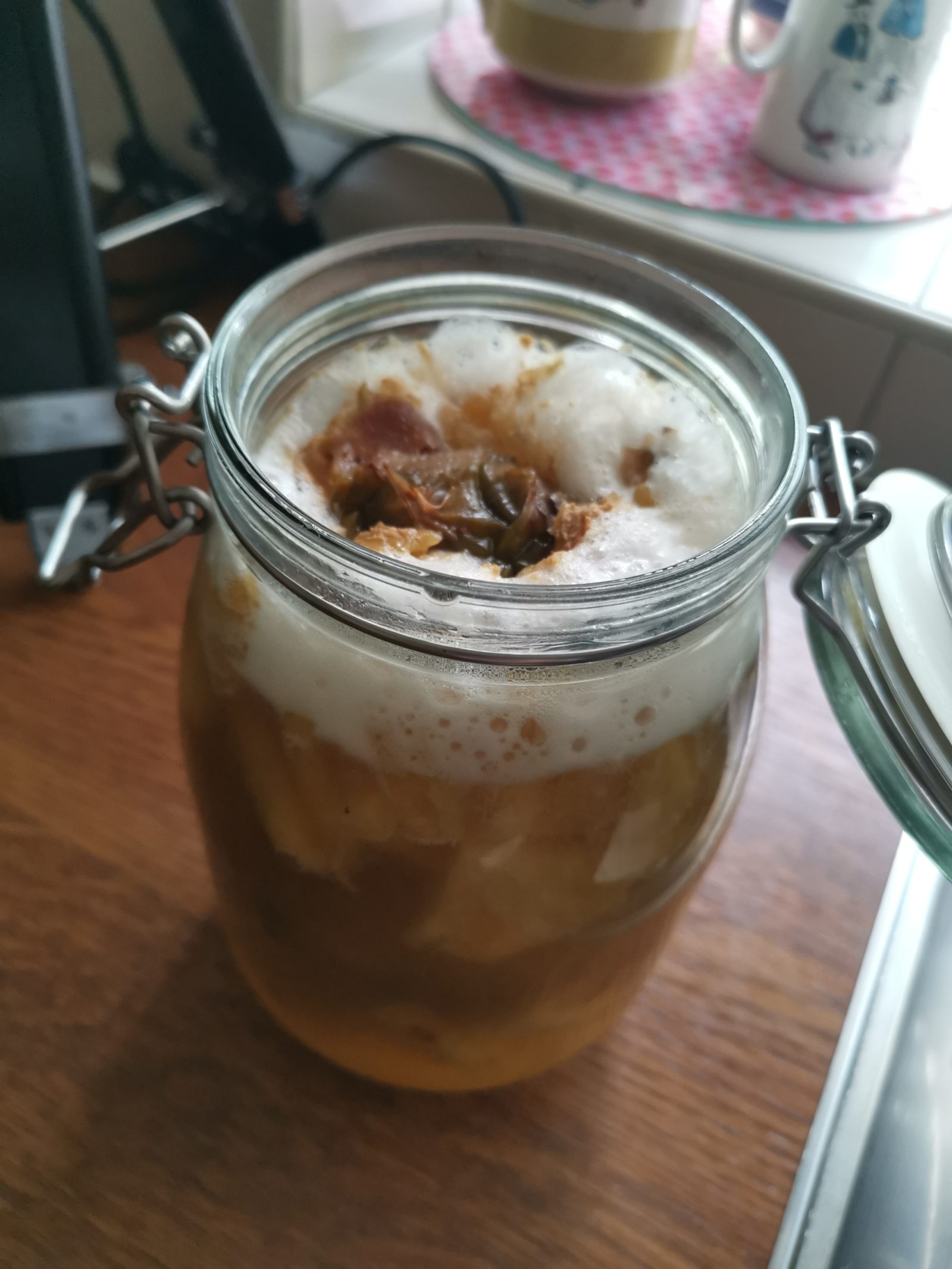Tepache is a Mexican beverage made from fermented pineapple juice. You cut a pineapple, rind and all, as this is where the natural yeasts hide that kicks of the fermentation and add mix it with brown sugar and your choice of spices. The usual suspects are cinnamon, cloves and ginger but you can add whatever you like such as chilli for a bit of fiery heat or vanilla pods.
The mix is left to ferment for a few days, in which time the yeast starts to feed off the sugar, eventually turning it into alcohol. We’re not talking wine strength here, only a few abv. as this is traditionally enjoyed by people of all ages in Mexico with some ice, for a refreshing afternoon thirst quencher.
The tepache once mixed with sugar, water and your choice of spices should be kept out of the fridge in a warmish environment as this speeds up the fermentation process for a few days, until you start to see some bubbling and white froth on top.
I’ve read online that this can take between 2-3 days but this is probably in warmer climates as I nearly threw mine out on the 5th morning, but when I came home from work it was bubbling away nicely.
After 3 or 4 days of no life, I thought that by heating up the sugar with the water and adding boiling water to the pineapple mix that I had killed off all of the natural yeast. So next time, I’m just going to add the water and sugar and give it a shake.
To give it a little hand, I didn’t think the kitchen was warm enough to start the fermentation, so I placed my tepache container in very warm water for an hour on the 4th day to try and get a bit more heat to the mix. I think this is what saved it as the 5th day, the fermentation started.
With any form of fermentation you need to make sure that everything you use is properly sterilised so that you don’t go adding any harmful bacteria that will either spoil your ferment or leave you feeling ill, once consumed. One other area of caution is too much gas and pressure on your mixing container.
When the Tepache starts to ferment, it will give off co2 (gas) in the process. As your container is sealed, this leads to a build up of pressure inside. If you use thin or cheap glass containers and you don’t burp (let out the gass) regularly then it could potentially cause the container to explode. A high price to pay for a bit of hooch.
You can get some fermenting jars I’ve seen online. Lakeland sell some for about £8 and Kilner around the £20 mark. What these do is have a one way filter for gas and pressure to escape, thus relieving the tepache container of too much pressure.
Once the tepache has fermented and you’ve seen bubbles, you want to decant the liquid and remove the fruit pieces, otherwise it will eventually turn to vinegar. Pineapple vinegar doesn’t sound too bad, but I can’t drink that in a glass. I left mine overnight after seeing the bubbles just to make sure the sugar has been broken down and it’s not too sweet.
You then want to give it what’s known as a secondary ferment in the bottle or another container. This is where you get the natural carbonation for the drink. Add it to a container, minus the fruit and pop it in the fridge. Make sure to give it a burp once a day too and leave it for around 2 days. Now you should be good to go.
You can enjoy cold with some ice or make it a bit boozy and add some beer.
I tried a tasting board of tepache, one with Danish Spirit Producer Empirical Spirits collaboration with Lyaness Bar Onyx Blend, one with Mikeller IPA and one low abv version with just ice and a squeeze of fresh lime.
To be fair I enjoyed all three, but it was delicious in the ice cold beer for an extra fruity kick.
Tepache Ingredients
- 1 Pineapple,
- 1 cup of brown sugar (I used two half cup measurements I use for my oats)
- 1 stick of cinnamon
- 3 cloves
- 1 small piece of fresh ginger
- Water
Tepache Recipe Instructions
- Give the pineapple a little rinse in cold water, just to remove any debris but nothing too crazy as this is where the yeast needed to start the ferment lives.
- Peel the rind, remove the fibrous core as I’ve heard this can be a bit bitter, then chop the flesh into chunks.
- Add the rind and I used half of the pineapple flesh. It depends how big your vessel is but if I used the whole thing, I wouldn’t have had any space for the water.
- Add the sugar and spices and top with water. You want to cover the fruit as this should be fully submerged so as not to protrude over the mixture and start decomposing but leave a bit of a gap at the top of the container so the tepache has some room to breath and for the gas to go.
- Close the top and give a shake.
- Don’t go sealing it straight away as the yeast and ferment will need some air
- Use some cheese cloth or a clean tower and cover the opening to the container. You can use an elastic band to keep it in place. This allows the mix to breath but stops any insects having a party in there.
- Leave out in a warm area but out of direct sunlight.
- The warmer the better but nothing too mental. I think mine took 5 days because my room wasn’t particularly warm but I did add the container to a pot of hot water on the 4th day to try and speed things up for an hour.
- Leave for a few days until it starts to ferment and bubble. Other websites said this will take 2-3 days but this depends on the climate and temperature. Colder rooms or countries might take longer.
- Don’t let it go too long after the ferment or you will be left with pineapple vinegar.
- Strain the fruit from the liquid and add the liquid to a new clean bottle or container. Make sure the container is of good quality so it doesn’t explode from the pressure. Make sure there is ample room for the build up of gas.
- Put the container in the fridge for what’s known as the secondary ferment to carbonate.
- Burp or open the container once a day to release the gas and pressure. The tepache should be ready in 1-2 days.
- Drink with ice or mix with a beer.
note: It should look like below when it starts to ferment



